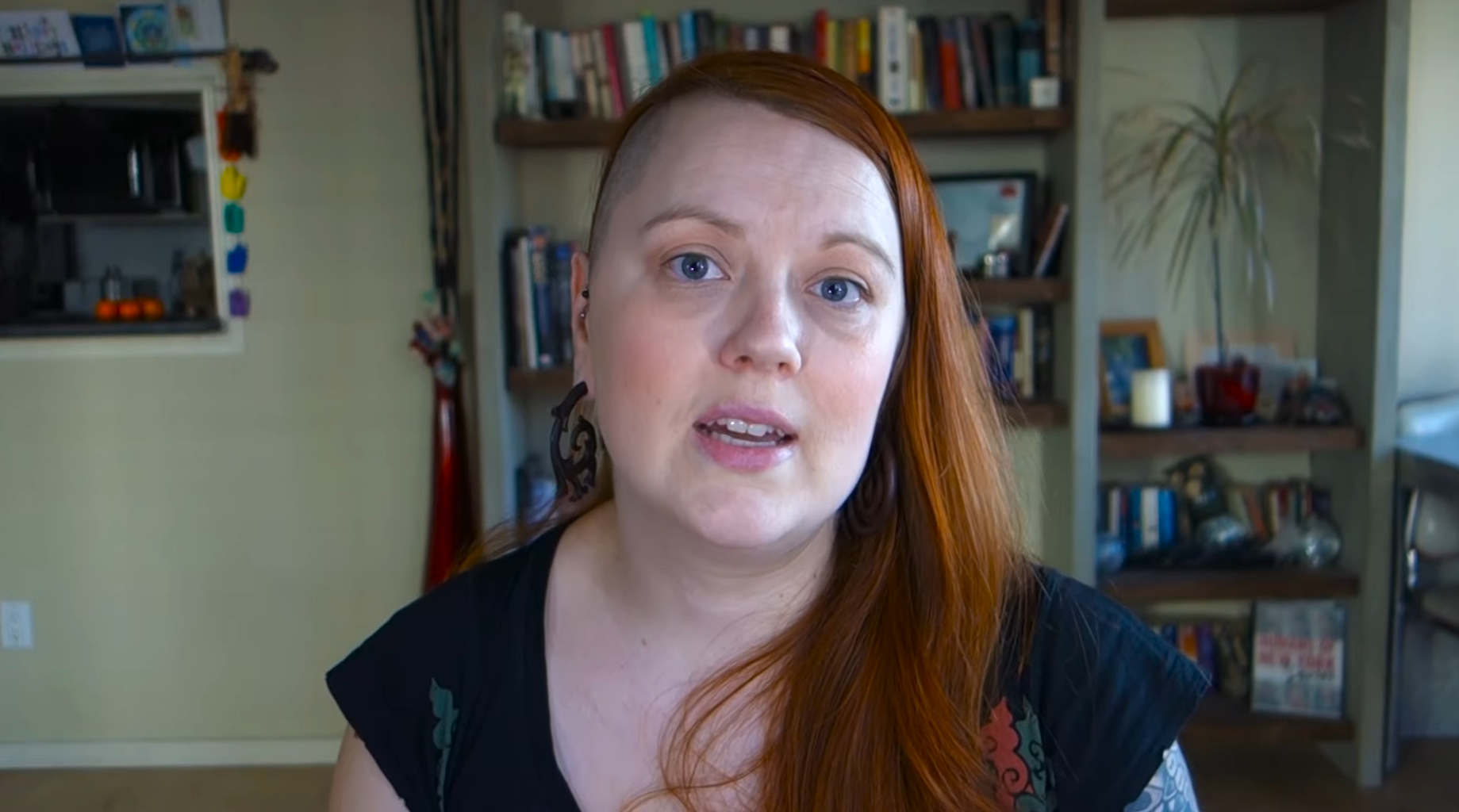Full Transcript:
Hi, I’m Kale! This is my second video. In my first video, I covered some forms of Nonmonogamy. Today I’m going to cover one of more complex forms, Polyamory.
Polyamory is an umbrella term and it means a lot of different things to different people, so this is going to be just a brief overview of some different forms of polyamory.
Polyamory means many loves. It mixes the Greek word poly meaning “many or several”, and the Latin word amor, meaning “love”. The combination of Greek and Latin makes some linguists cringe.
A polyamorous person, or poly for short, forms consensual, intimate relationships with more than one person at a time. Consent is really the key here, it is what separates ethical nonmonogamy from cheating.
A common thing to hear in poly circles is Love is Infinite. However, how a person can show that love can be restricted by how much time and space they have in their life.
Poly people believe that they can love more than one person at a time, and that doesn’t take away the love they feel for someone else. Love is expansive, and it can grow. An idea that you hear tossed around a lot is when a parent has a second child, they don’t love the first child any less. Another example would be if you’re connecting really well with a friend, it’s not going to change how you feel about your existing friends.
Being poly can be a lifestyle choice, or it can be an orientation, like a sexual or gender orientation. An example of a lifestyle choice would be someone choosing polyamory because it aligns with personal or political beliefs. This person may choose to practice poly for part or the rest of their lives. An example orientation is when someone who has always felt as though monogamy was not the right fit for them. Although they may not know that ethical nonmonogamy is a choice! This can mean they end up in monogamous relationships that don’t really work for them.
Polyamorous relationships can be either hierarchical or non-hierarchal.Hierarchal relationships have primaries, secondaries, tertiaries, etc. Some people use these terms to describe their relationships for ease of communication. I would argue that if that is the case, there are ways around it rather than ranking someone as less important.
Being a secondary can have very real meaning and consequences. For example if a primary couple sets up rules and boundaries to feel safe and protect their relationship, this can mean being a primary comes with a status that being secondary does not. Some examples of rules couples might make are: No sex on the first date, or No sleepovers, or No falling in love. The problem with these is they often don’t address the root need, like why do sleepovers feels bad? And policing people’s feelings doesn’t usually work.
Moving on to non-hierarchal relationships. In non-hierarchal poly relationships there are no secondaries or primaries. One person does not have privilege above another. Conflicts are negotiate situationally among the people who are involved.
In non-hierarchical poly, there is no ranking between romantic and sexual relationships, however there is hierarchy in their overall social network. They do place more value on romantic relationships over friendships, unlike relationship anarchists. More about that in my next video.
Some types of polyamorous relationships include Polyfidelity. Polyfidelity a group structure where everyone is involved in simultaneous relationships with each other. It requires that the members of the group, however large that group is, practice emotional or sexual fidelity. It could look similar to monogamy, except involve more than two people. They will only have sex and/or intimate relationships inside the group. They may choose to keep the group closed, or invite in new members if everyone agrees.
Another type of polyamorous relationship is Vs or Ws . This is when some people are involved with each other, but not everyone is involved with everyone else. The V is a common form of this, where the person at the base is involved with each of the points. For example, a woman in the base of the V might have two boyfriends. The boyfriends might be friends with each other, but they are not involved romantically or sexually. They are called each others metamours. An extended version of that is the W, for example two women and three men are involved, but the men aren’t involved with each other.
Mono/Poly relationships. In some cases a monogamous person and a poly person get together, and this is called a mono/poly relationships. In this case, one half of the couple chooses to pursue outside relationships, while the other half of the couple chooses to stay monogamous. Because we are talking about ethical nonmonogamy, both parties consent to this arrangement.
The final type of nonmonogamy I wanted to talk about was Relationship Anarchy, but that’s going to get it’s own video, so check that out! I’m going to post links to Facebook and Twitter down below, and thank you so much for watching. Bye!


Recent Comments